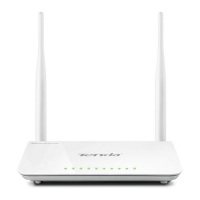TKIP encryption protocol to guarantee better security than that
provided by WEP or WPA. Currently, WPA is supported by
Windows XP SP1.
IEEE 802.1X Authentication
IEEE 802.1X Authentication is an IEEE Standard for port-based
Network Access Control (PNAC). It is part of the IEEE 802.1
group of networking protocols. It provides an authentication
mechanism to devices wishing to attach to a LAN or WLAN.IEEE
802.1X defines the encapsulation of EAP over LAN or EAPOL.
802.1X authentication involves three parties: a supplicant, an
authenticator, and an authentication server. The supplicant is a
client device (such as a laptop) that wishes to attach to the
LAN/WLAN - though the term 'supplicant' is also used
interchangeably to refer to the software running on the client
that provides credentials to the authenticator. The authenticator
is a network device, such as an Ethernet switch or wireless
access point; and the authentication server is typically a host
running software supporting the RADIUS and EAP protocols. The
authenticator acts like a security guard to a protected network.
The supplicant (i.e. client device) is not allowed access through
the authenticator to the protected side of the network until the
supplicant’s identity has been validated and authorized. With
802.1X port-based authentication, the supplicant provides
credentials, such as user name / password or digital certificate,
to the authenticator, and the authenticator forwards the
credentials to the authentication server for verification. If the
authentication server determines the credentials are valid, the
supplicant (client device) is allowed to access resources located
on the protected side of the network.

